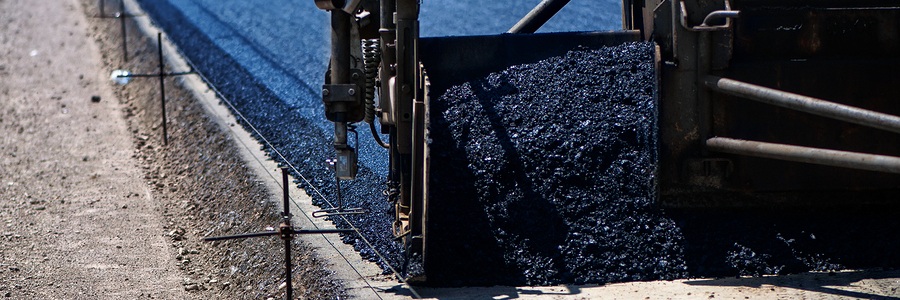The Buzz on A1 Professional Asphalt & Sealing Llc
The Buzz on A1 Professional Asphalt & Sealing Llc
Blog Article
A1 Professional Asphalt & Sealing Llc Fundamentals Explained
Table of ContentsSome Known Incorrect Statements About A1 Professional Asphalt & Sealing Llc Unknown Facts About A1 Professional Asphalt & Sealing LlcGet This Report about A1 Professional Asphalt & Sealing LlcSome Ideas on A1 Professional Asphalt & Sealing Llc You Need To KnowTop Guidelines Of A1 Professional Asphalt & Sealing Llc

The oil in an auto engine is not just oil. It has a range of ingredients to improve the automobile's performance. These include polymers, viscosity modifiers, heat stabilizers, additional lubes, and use additives. The REOB consists of all the additives that were in the waste oil as well as the wear metals from the engine (primarily iron and copper).
Nonetheless, by making several blends using different REOB samples and different asphalt binders, the variants largely can be balanced out. A number of States provided samples of recognized REOB make-up to TFHRC researchers, who examined the samples to contrast the portion of included (understood) REOB to the found (tested) amount. The analyses revealed an equivalent portion of included and discovered REOB.
10 Easy Facts About A1 Professional Asphalt & Sealing Llc Described
None of those States recognized that the asphalt they were purchasing consisted of REOB. One State urged its examples had no REOB - https://a1asphaltseal.edublogs.org/2024/04/20/a1-professional-asphalt-sealing-llc-mastering-asphalt-repairs-and-sealcoating/.
Of the 1,532 examples checked, 12 percent had REOB, and some included appreciably high levels of it at 1020 percent. The highest possible level was 34 percent in an example from Texas, which TxDOT had actually made use of in a patching substance. This screening also exposed the presence of phosphoric acid in 11 percent of the samples, and 2 percent had ground tire rubber.
Two years back at TRB's annual conference, the Federal scientists held an REOB workshop and provided the findings of their lab analyses to a standing room-only crowd. Although some agencies do not particularly outlaw REOB, they do enforce physical tests that prevent its useeffectively a restriction. asphalt sealcoating in st louis. Others do not ban it by spec, but have arrangements with asphalt vendors to avoid making use of REOB
Little Known Facts About A1 Professional Asphalt & Sealing Llc.
A handful do permit REOB, some within particular limitations. Ohio and Texas limit degrees to much less than 5 percent of the asphalt. To establish a trusted test approach that all States can use, the TFHRC researchers established a round-robin test plan. The participants are 11 State highway agencies (Illinois, Massachusetts, Minnesota, Mississippi, Montana, North Carolina, Oklahoma, South Carolina, Texas, Vermont, and Wyoming), 2 independent testing laboratories, click site the Ministry of Transportation in Ontario, Queen's University in Ontario, and an Ontario paving specialist.
In total, the researchers prepared and delivered 720 blends. The individuals are evaluating the examples separately using the guidelines given by the TFHRC researchers. The round-robin testing is almost finished, and TFHRC is in the process of collecting the outcomes. The result will certainly be a suggested AASHTO test approach that any kind of State can adopt and make use of (a1 asphalt).
The sidewalk with REOB, which is situated 0.6 mile (1 kilometer) from the sidewalk without REOB, has identical subgrade, traffic density, and environment. Nonetheless, the sector of Highway655 with 5 to 10 percent REOB revealed substantial cracking. In this example, the visibility of REOB was the determined reason of fracturing at a low temperature levels.
"In our experience in Canada, even small amounts of 23 percent can be an issue." A section of test sidewalk in Minnesota (MN1-4) located to include REOB likewise cracked prematurely. The pavement executed well for the initial 3 to 4 years, but then started to split. This sidewalk is additionally subject to low temperatures.
10 Easy Facts About A1 Professional Asphalt & Sealing Llc Explained
The examinations were not comprehensive, however they revealed that at degrees of 6 percent or more, the tensile toughness of the asphalt went down significantly. At a level of 3.5 percent REOB, the variant in the physical test methods was above the result of REOB. It was difficult for scientists to analyze whether REOB was present. https://fliphtml5.com/homepage/unsho/a1asphaltsealng/.

One binder specification considered is the difference between the low temperature critical requirements temperature level for rigidity (S) in the bending beam of light rheometer and the flexing beam rheometer creep incline (m-value) noted as Tcritical. TC = TC (S) TC (m-value). Assessment of this specification is still continuous. 2 independent research teams, one from AASHTO and the various other from the Asphalt Institute, ended that even more research is required on the use of REOB in asphalt.
Formerly, all asphalt screening gauged engineering buildings such as tightness. These tests do not reveal what products had been added to the asphalt.

The smart Trick of A1 Professional Asphalt & Sealing Llc That Nobody is Talking About
These outcomes show there are weak points in the standard engineering screening protocols that may be exploited. The manufacturer might have an economic advantage and the product passes all the standardized tests, yet the item might not be beneficial to ensuring long-term efficiency. To resolve this problem and the development of new asphalt additives and extenders, TFHRC is starting a study program to use handheld spectroscopic devices, x-ray fluorescence spectroscopy, and Fourier change infrared spectroscopy to make it possible for analyses to be carried out in the area instead of having to take samples back to the lab.
Report this page